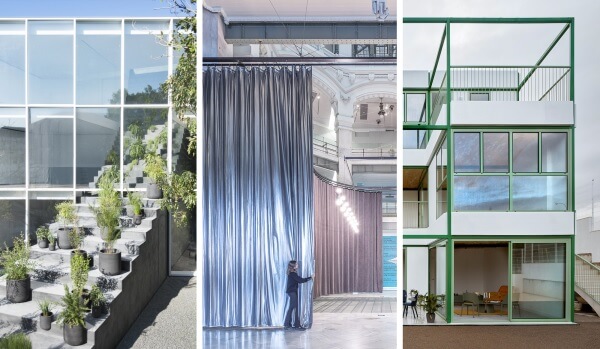Exploring the Latest Trends in Architectural Hardware Designs

Those who know a thing or two about architecture and interior design know very well that the the details can either make or break the equation. Imagine this: door handles, knobs, hinges, and locks. They might seem like the unsung heroes of design, but guess what? These seemingly small elements can wield incredible power, shaping not only the look but also the functionality of a space.
Now, let’s fasten our seatbelts because the world of architectural hardware design is evolving faster than ever. Today, we’re going on an adventure to uncover the hottest trends in architectural hardware. We’re about to reveal the captivating impact that these seemingly humble components can have on the grand tapestry of a space’s design. Get ready to be wowed!
1. Minimalism and Simplicity
Certainly, one of the standout trends in architectural hardware design leans heavily towards minimalism and simplicity. Clean lines, sleek finishes, and unobtrusive designs are catching on in a big way. What we’re seeing is that hardware manufacturers are crafting handles and knobs with a minimalist touch, and these pieces effortlessly integrate into contemporary interiors, cultivating an elegant and clutter-free appearance.
Satin nickel and matte black finishes are particularly in vogue, offering a timeless and versatile appearance that complements a wide range of design styles. These finishes can be found on everything from door handles to cabinet pulls, providing consistency and cohesion throughout a space.
2. Sustainable Materials
With sustainability taking center stage in the world of architecture and design, we’re witnessing a notable surge in the utilization of eco-conscious materials in architectural hardware. Manufacturers are now leaning towards environmentally friendly options like recycled metals, reclaimed wood, and bamboo to craft hardware pieces. The remarkable thing is that these choices not only exude style but also carry a reduced environmental footprint, aligning beautifully with the growing concerns for the planet.
Moreover, there’s a rising fascination with hardware that can be conveniently repurposed or recycled when it reaches the end of its lifespan. This trend dovetails neatly with the overarching drive toward sustainability in the realms of design and construction.
3. Smart and Integrated Hardware
Another noteworthy trend is the seamless infusion of smart technology into architectural hardware. We’re seeing a growing prevalence of home automation systems, and architects and designers are wholeheartedly embracing this wave by incorporating smart locks, doorbells, and lighting control systems into their projects. What’s particularly captivating about these technologies is that they not only heighten convenience and security but also lend a distinctive touch to the overall design aesthetic.
For example, smart locks with sleek, touch-sensitive keypads eliminate the need for traditional keys, creating a cleaner and more futuristic look. Likewise, integrated lighting controls allow homeowners to adjust lighting levels and colors to suit their mood and preference, transforming the ambiance of a space with the touch of a button.
4. Customization and Personalization
The world of architectural hardware has broken free from the confines of standard, off-the-shelf choices. A standout development is the ascendancy of customization and personalization as pivotal trends within the industry. Architects and designers now have the creative latitude to fashion hardware that mirrors the distinct personality of a space, ushering in a new era of bespoke design possibilities.
Custom finishes, textures, and engraving options are increasingly available, giving clients the opportunity to make a personal statement in their interior design. From bespoke handles for kitchen cabinets to one-of-a-kind entryway doorknobs, the possibilities for customization are virtually limitless.
5. Vintage and Retro Revival
Paying homage to the past, we’re witnessing a resurgence of vintage and retro-inspired hardware designs. Homeowners and designers alike are rekindling their appreciation for the enchanting allure of antique hardware styles hailing from various eras, encompassing the likes of Art Deco, Mid-Century Modern, and the Victorian era.
Manufacturers are responding to this trend by offering reproduction hardware that captures the essence of these bygone eras while incorporating modern materials and technology. Vintage-inspired hardware can add a touch of character and history to contemporary interiors, creating a sense of timelessness.
6. Textured and Tactile Elements
In contrast to the sleek and minimalist designs, there is a growing interest in architectural hardware with textured and tactile elements. These elements add depth and sensory appeal to a space, inviting touch and exploration.
Hardware featuring textured surfaces, knurled patterns, or organic shapes can create a sensory experience that engages the user on a tactile level. These designs are especially popular in high-end luxury homes and boutique hotels, where the emphasis is on creating a multisensory environment.
7. Bold and Unique Shapes
Architectural hardware is no longer limited to traditional shapes and forms. Designers are increasingly embracing bold and unique shapes that serve as focal points in a room. These unconventional designs can inject personality and creativity into a space.
For example, oversized and sculptural door handles can make a dramatic statement in an entryway, while geometric cabinet knobs can add a touch of avant-garde flair to a kitchen. These distinctive shapes challenge conventional design norms and encourage experimentation.
8. Biophilic Design Elements
As the concept of biophilic design gains traction, architectural hardware is not exempt from this green trend. Biophilic design aims to connect people with nature by incorporating natural elements into interior spaces. Architectural hardware manufacturers are responding by creating hardware that reflects the beauty of the natural world.
Handles and knobs inspired by organic forms such as leaves, branches, or river rocks are becoming increasingly popular. These designs infuse spaces with a sense of tranquility and connection to the outdoors. Furthermore, hardware made from sustainable materials like cork, rattan, or bamboo can be used to enhance the biophilic ambiance, promoting wellness and harmony within interiors.
9. Mix-and-Match Hardware
A trend that encourages creativity and personal expression is the mix-and-match approach to architectural hardware. Rather than sticking to a single hardware style or finish throughout a space, designers and homeowners are deliberately combining different elements to achieve a more eclectic and personalized look.
For instance, one might pair matte black door handles with brass cabinet pulls or mix antique brass with polished chrome within the same room. This juxtaposition of contrasting styles and finishes adds visual interest and depth to the design, creating a unique and curated appearance. This trend is all about breaking the rules and embracing the freedom to experiment with hardware combinations to achieve a one-of-a-kind aesthetic.
Conclusion
In the ever-evolving world of architecture and interior design, even the smallest details matter. Architectural hardware, once overlooked, is now at the forefront of design innovation.
From minimalistic simplicity to smart integration, sustainability to customization, and vintage revival to bold shapes, the latest trends in architectural hardware designs offer a wide range of options for architects, designers, and homeowners to express their creativity and enhance the functionality of their spaces.
As we move forward, we will undoubtedly see an increasing number of vendors such as CG Hardware provide an entry point to the world of architectural hardware design, giving you every component you need to morph your indoor space into something that aligns with your unique preferences and needs.





